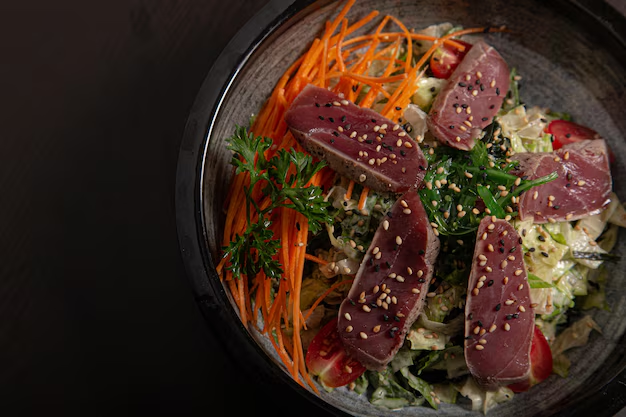Maximizing the Freshness of Your Leftover Hibachi: Refrigerator Storage Tips
There's something irresistibly delightful about a fresh hibachi meal—whether you’ve indulged in a restaurant classic or cooked up a sizzling dish at home. But what happens when you can’t finish those savory leftovers in one sitting? Understanding how long hibachi remains good in the refrigerator is essential to enjoying its flavors for as long as possible while ensuring food safety.
In this article, we'll explore optimal storage techniques, signs of spoilage, and complementary kitchen practices to maximize the life of your hibachi leftovers. Whether you're a hibachi enthusiast or a culinary explorer, these guidelines will help keep your meal fresher for longer.
Understanding Hibachi and Its Ingredients
What Is Hibachi?
Hibachi typically refers to a style of Japanese grilling method that involves cooking meat, seafood, and vegetables over a high flame, traditionally on a cast-iron plate. It’s famous for its unique flavor and preparation techniques.
Common Ingredients
While hibachi can vary, some recurring components include:
- Meat and Seafood: Beef, chicken, shrimp, and steak are popular choices.
- Vegetables: A combination of mushrooms, bell peppers, onions, and zucchini.
- Starches: Rice or noodles seasoned with soy sauce, garlic, and various spices.
Different ingredients influence the shelf life and storage needs of your hibachi leftovers.
Refrigeration: How Long Can Hibachi Last?
Basic Guidelines
Generally speaking, you can expect properly stored hibachi leftovers to last up to 3 to 4 days in the refrigerator. However, several factors can affect this timeframe, including the type of ingredients used and how the dish was initially prepared and stored.
Factors Influencing Shelf Life
- Ingredient Perishability: Seafood typically spoils faster than cooked rice or vegetables.
- Preparation and Handling: The shelf life is shortened if the food is left out for extended periods before refrigeration.
- Refrigerator Conditions: Consistent temperature settings below 40°F (about 4°C) are crucial for maintaining freshness.
Storing Leftovers Properly
To ensure your hibachi stays fresh and safe to eat:
- Cool and Store Promptly: Allow food to cool slightly, but refrigerate within two hours of cooking.
- Use Airtight Containers: Seal leftovers in airtight containers to prevent air exposure and moisture loss.
Tips for Ensuring Food Safety
Key Practices
- Label and Date: Mark your containers with the date stored. This helps keep track of when your leftovers were placed in the fridge.
- Use Clear Containers: See-through containers make it easier to identify contents without having to open the lid, limiting air exposure.
- Avoid Layering Different Foods Together: Store meats separately from veggies to prevent cross-contamination.
Spotting Spoilage
Keep an eye (and nose) out for signs indicating spoilage:
- Unpleasant Odor: A sour, rancid smell usually means the food has gone bad.
- Texture Changes: If your vegetables are slimy or meats feel mushy, it's time to discard them.
- Discoloration: Brownish or greenish hues on vegetables and meats can signal spoilage.
When in Doubt, Throw It Out
Safety first! If you're uncertain whether hibachi leftovers are still good, it's safer to discard them.
Extending Shelf Life
Freezing Hibachi
Can You Freeze It?
Yes, hibachi can be frozen to extend its shelf life beyond the 3 to 4 days ideal for refrigeration.
Best Practices for Freezing
- Portion Before Freezing: Divide into manageable portions for easier reheating.
- Avoid Freezer Burn: Use freezer-safe bags or containers.
- Label: Write the freeze date to manage future consumption.
Thawing and Reheating
To preserve flavor and texture when thawing:
- Thaw in the Refrigerator: This ensures safe, even thawing.
- Reheat Thoroughly: Heat to an internal temperature of 165°F (about 74°C) to kill any lingering bacteria.
Complementary Food Storage Practices
Storing Cooked Rice and Noodles
Since these are often part of a hibachi meal, remember they follow similar storage guidelines:
- Refrigerate Promptly: Like hibachi, store cooked rice and noodles within two hours of cooking.
- Use Airtight Containers: Preserve freshness and flavor.
Specific Guidelines for Meats and Seafood
- Seafood Best Eaten Fresh: Due to higher spoilage rates, consume seafood-based hibachi sooner.
Quick Reference Summary 🍽️
Here's a handy recap to help you manage your hibachi leftovers effectively:
- Refrigerate within 2 hours: Bacterial growth is minimized.
- Use airtight containers: Prevents contamination and preserves taste.
- Keep below 40°F (4°C): Optimal for inhibiting bacterial growth.
- Observe ‘3 to 4 days’ rule: Consume within this period for best quality.
- Being aware of signs of spoilage: Change in smell, texture, or color indicates it’s time to dispose of leftovers.
- Consider freezing: When planning to store longer, with proper portioning and labeling for optimal results.
Maintaining the freshness of your hibachi doesn’t have to be daunting. With careful attention to storage practices and close monitoring for spoilage, you can enjoy your flavorful, sizzling hibachi meals even days after they are prepared. Remember, safety and freshness go hand in hand for a delightful culinary experience. 🌟
